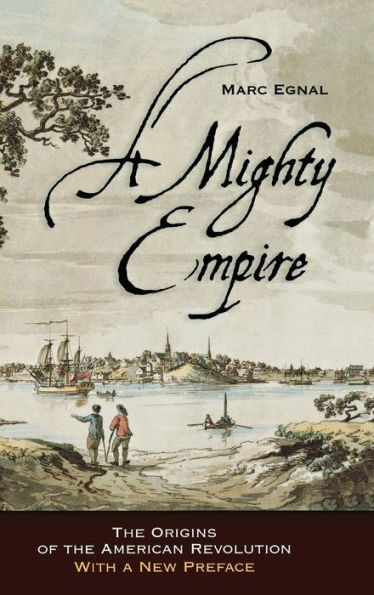While advancing this interpretation, Egnal explores several salient aspects of colonial society. He scrutinizes the partisan battles within the provinces and argues that they were in fact clashes between the expansionists and a second long-lived faction that he calls the "nonexpansionists." Through close analysis he shows how economic crisis—the depression of the 1760s—influenced the colonists' behavior. And although he focuses on the initiative and leadership of the elite, Egnal also investigates the part played by the "common people" in the rebellion.
A Mighty Empire contains insightful sketches of Benjamin Franklin, John Adams, and other revolutionary leaders and makes clear the human dimensions of the clash with Great Britain. The final chapter provides a new context for understanding the writing of the Constitution and considers the links between the Revolution and modern America. An appendix lists members of the colonial factions and identifies their patterns of political commitment.
Now back in print with a new preface, A Mighty Empire is a valuable addition to the debate over the role of ideas and interests in shaping the Revolution. For the 2010 edition, Egnal reviews how interpretations of the American Revolution have developed since the publication of his landmark volume. In his new preface he considers and critiques explanations for the Revolution founded on ideology, the role of non-elite Americans, and British politics. Egnal also looks to a trend in the writing of the history of the Revolution that considers its effects more than its causes and thereby grapple with the conflicts ingredient in the nascent American empire. With great lucidity, he shows where the writing of history has gone since the appearance of A Mighty Empire and makes a case for its continuing relevance.
While advancing this interpretation, Egnal explores several salient aspects of colonial society. He scrutinizes the partisan battles within the provinces and argues that they were in fact clashes between the expansionists and a second long-lived faction that he calls the "nonexpansionists." Through close analysis he shows how economic crisis—the depression of the 1760s—influenced the colonists' behavior. And although he focuses on the initiative and leadership of the elite, Egnal also investigates the part played by the "common people" in the rebellion.
A Mighty Empire contains insightful sketches of Benjamin Franklin, John Adams, and other revolutionary leaders and makes clear the human dimensions of the clash with Great Britain. The final chapter provides a new context for understanding the writing of the Constitution and considers the links between the Revolution and modern America. An appendix lists members of the colonial factions and identifies their patterns of political commitment.
Now back in print with a new preface, A Mighty Empire is a valuable addition to the debate over the role of ideas and interests in shaping the Revolution. For the 2010 edition, Egnal reviews how interpretations of the American Revolution have developed since the publication of his landmark volume. In his new preface he considers and critiques explanations for the Revolution founded on ideology, the role of non-elite Americans, and British politics. Egnal also looks to a trend in the writing of the history of the Revolution that considers its effects more than its causes and thereby grapple with the conflicts ingredient in the nascent American empire. With great lucidity, he shows where the writing of history has gone since the appearance of A Mighty Empire and makes a case for its continuing relevance.

A Mighty Empire: The Origins of the American Revolution
412
A Mighty Empire: The Origins of the American Revolution
412Hardcover

Product Details
| ISBN-13: | 9780801419324 |
|---|---|
| Publisher: | Cornell University Press |
| Publication date: | 02/24/1988 |
| Pages: | 412 |
| Product dimensions: | 6.00(w) x 9.00(h) x 1.31(d) |
| Age Range: | 18 Years |
